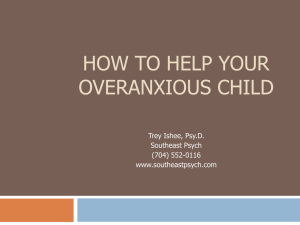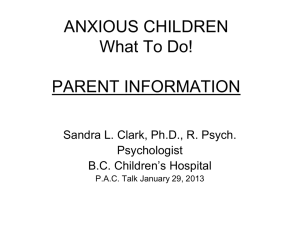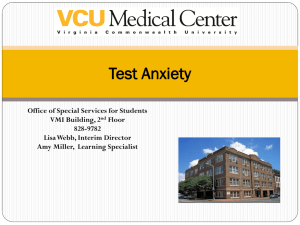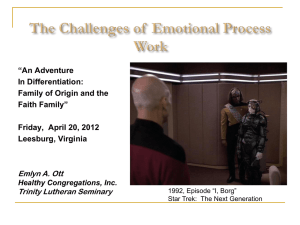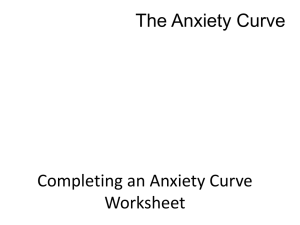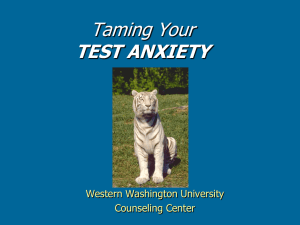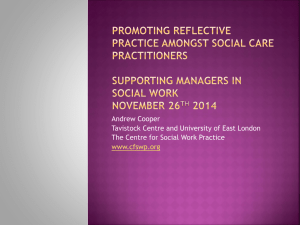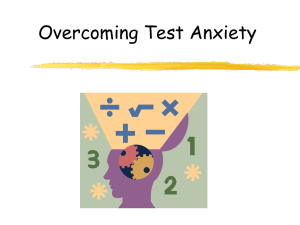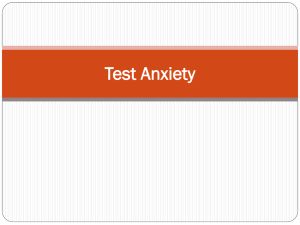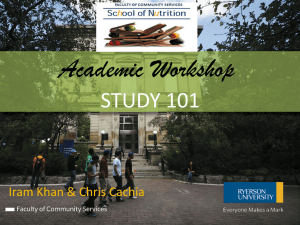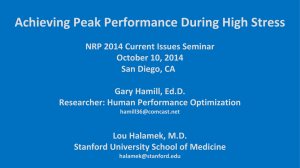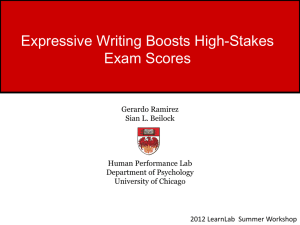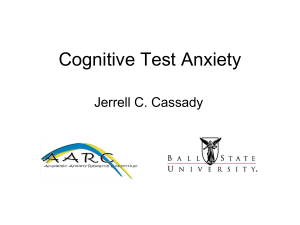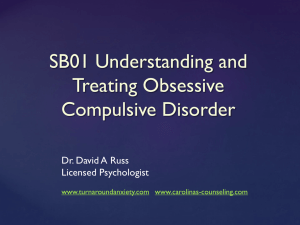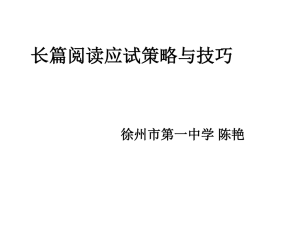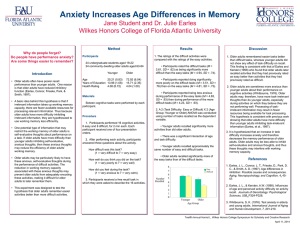MartamidtermPresentation-1
advertisement
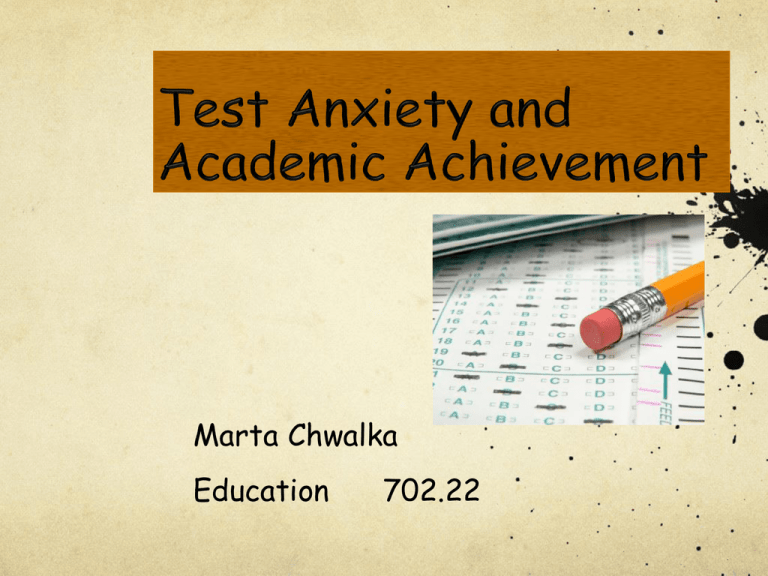
Marta Chwalka Education 702.22 Table of Contents : Introduction: Statement of the Problem Review of Literature Statement of the Hypothesis Statement of the Problem With the current and rising concern about the quality of public education and our increasing reliance on test scores to measure academic achievement there is a growing number of students who experience test anxiety. Also, with increased “expectations regarding the complexity of work to be mastered at earlier developmental age’’ ( Turner et al., 1993 ) test –anxious students feel overwhelmed and they self-doubt their abilities to perform. Students with high test anxiety feel tense, fearful and worried in evaluative situations; they perceive testing situations as threatening. Students who experience test anxiety display lower self-esteem and negative self-concept. Often feelings of helplessness and uncertainty prevail during testing situations. Therefore, in my research I will investigate the effect of test anxiety on academic achievement. What test-anxiety means to me? As a child, I constantly ( everyday) experienced anxiety about test or oral examination. I have to admit that Mathematics was my “favorite” area of emotional failure. Never fully explained by my teacher, I begun to educate myself the best way I could. The result; bitten nails. By the time I graduated from school, I realized that learning is a process. I believe that putting strong emphasis on testing gives a wrong type of motivation. Instead motivating students to learn, we portray achievement as a key element to learning. I am not happy with the fact that some schools use test scores as their personal confidence boosters. I am worried that the quality of learning is compromised by high test scores. Review of Related Literature : Early research reports that high test- anxious students performed more poorly when achievement was emphasized. Test- anxious students are more self-critical and are more likely to experience task-irrelevant worry responses that interfere with the performance during examination. Because of negative, self- centered worry responses are incompatible with good performance, the high testanxious students also do more poorly on learning tasks, IQ tests and achievement tests, then do the low test- anxious students.(Sarson, 1984) The conception of test anxiety as a situation specific anxiety trait, with worry and emotionality as major component has stimulated considerable research on the relative impact of individual differences in worry and emotionality on test performance and academic achievement. The worry component of test- anxiety is described as “primarily cognitive concern about the consequences of failure.” (Spielberger, 1978) Continued... High level of anxiety causes a low level of achievement. When test- anxiety occurs the individual's behavior and physiology is effected. The presence of physiological hyperarousal (sweat, increased heart rate, rapid breathing) and cognitive obstruction disrupts the ability to formulate and organize coherent thinking pattern during test. (Wine, 1971). The Test Anxiety Scale for Children, commonly known as TASC (Sarason et al., 1960) is a multidimensional measure used to assess test anxiety in children. In, general, high performance was linked to low anxiety. It’s aim is to examine the relationship between anxiety and achievement. The results showed that anxiety relates negatively to school achievement. The finding were significantly valid across all ethnic groups and grade levels. However, one particular test reveals boys tendency to “minimize their fears” (Beidel et al., 1999) Improving students' academic performance has been a primary issue of educational research. Strategies designed to deal with test-anxious students focused on efforts to decrease anxiety while increasing test “wiseness”. Anxiety management and study skill training are along the main solutions.( Barret et al., 2001) Hypothesis : HR: Test-Anxiety of the 4th grade students negatively effects academic achievement.


